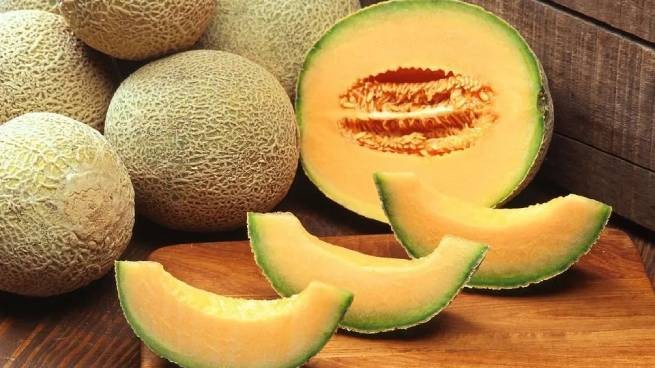You can feel the unique nectarean sweetness of melon if you know some simple secrets and clearly understand how to choose it correctly.
The melon crop of the pumpkin family is still a subject of debate among scientists as to what it should be called correctly – a fruit, a vegetable or a berry. But in the end it doesn't really matter. In any case, this fruit contains a lot of vitamins and a huge amount of iron, for which recommended by specialists for anemia, exhaustion, cardiovascular diseases. Delicate, aromatic melon pulp is a great dessert in the summer heat.
Currently, there are no wild varieties of this plant, but breeders never cease to amaze with the results of their efforts: the delicious fruits are becoming more and more fragrant and tender. However, you can fully feel this only if you clearly know how to choose the right melon.
The main indicator of fruit ripeness is its unique aroma., reminiscent of honey, pineapple, vanilla and pear. It is felt most strongly on the side opposite the tail and intensifies significantly in hot weather. It is better not to buy a melon that does not emit a smell, no matter how beautiful it is.
The tail – the trace from the plant stem – should be dry and thick. According to popular belief, its thickness indicates that the fetus is female and guarantees sweetness, although from a scientific point of view one can argue with this statement. The correct choice of melon and the sound that occurs when patting it will tell you – if it is dull, it’s time to start a pleasant meal.
A sweet and ripe melon should have a pleasant honey aroma. In this case, the smell should be felt even if the fruit is completely whole. If it smells green or has no smell at all, then most likely it is unripe and unsweetened.
Appearance and tactile sensations also play an important role, but depend on the variety. For example, collective farm melons should be round, bright yellow in color and smooth to the touch. On them Brown spots, dents and unpleasantly soft areas are not acceptable.
Slightly different criteria should be used when choosing a torpedo melon – elongated, rather large, slightly rough, with clear grooves along the surface. As when choosing other varieties, you need to remember two main postulates: If the surface of the fruit is too hard, it indicates immaturity; if it is too soft, it means that it is no longer suitable for consumption.
Most melons have a fairly thin crust, which in a ripe melon slightly creases when pressed. If such a dent remains on the surface of the fruit when pressure is no longer applied, then, most likely, the melon is overripe.
Sometimes unusual signs inside the melon – the presence of empty seeds and longitudinal veins, or lack of aroma – indicate that the fruit was grown with an unacceptable excess of fertilizers. This can cause poisoning; it is better not to eat this melon.







More Stories
Gambling: In the first half of 2024, the Greeks "put it on the line" 21.2 billion euros
"Death number" pedestrian on Iera Odos (video)
Traffic surveillance cameras never "don't go on vacation": fines of 200 euros